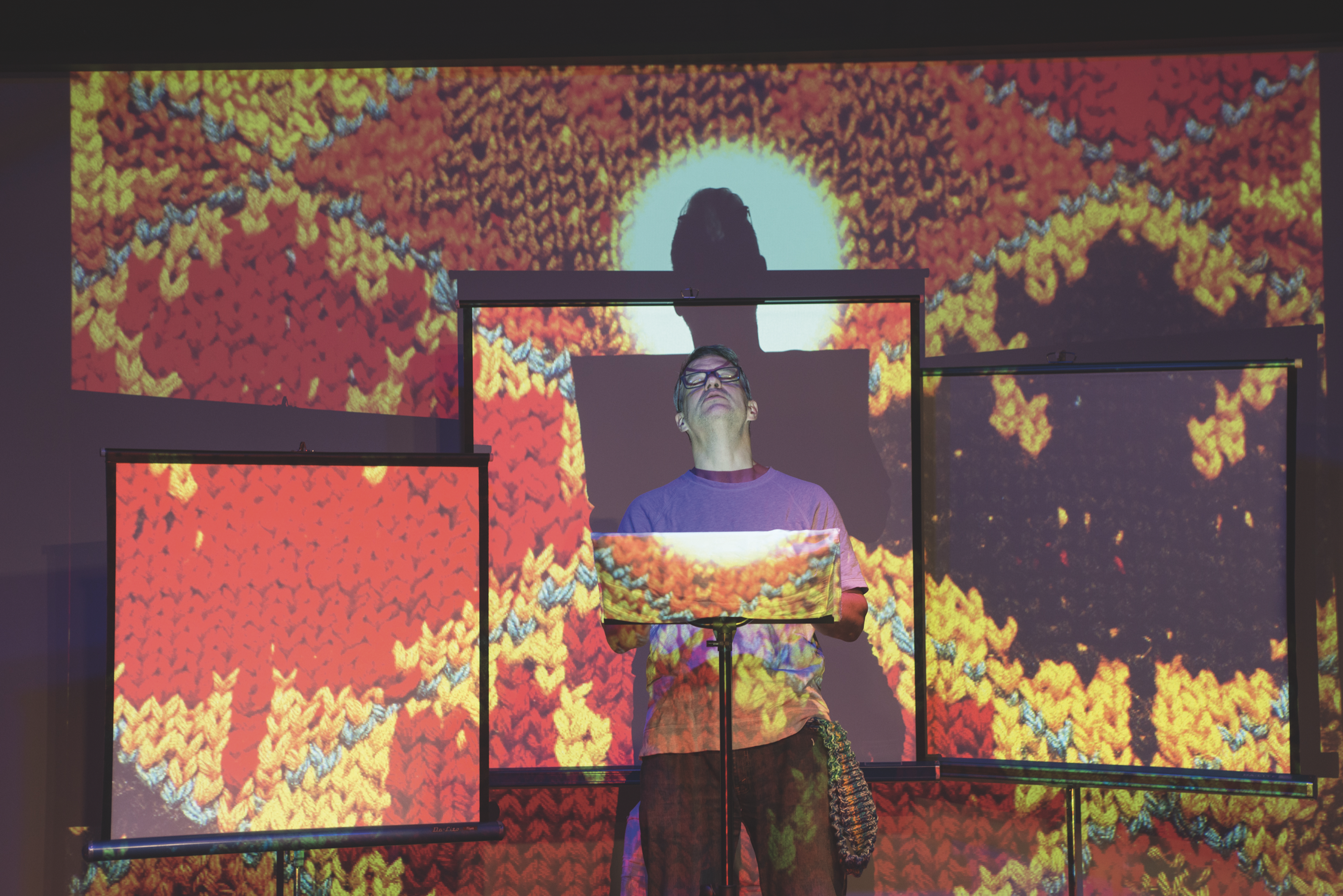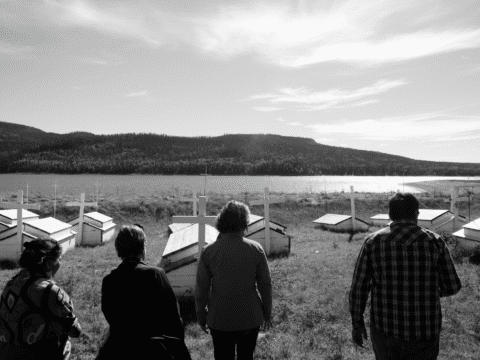The idea came to Kirk Dunn at Trinity-St Paul’s United in Toronto. As he sat in the pews with his wife, he looked up at the church’s stained glass windows and decided he wanted to recreate them in his art.
A simple idea, but not easy to execute for Dunn, whose artistic medium happens to be yarn. But now, after 15 years of labour, the knitter has created three stunning tapestries that mimic the form of stained glass windows, each one standing about eight feet tall and five feet wide.
Depicting images and narratives from the three Abrahamic faiths, the tapestries shimmer with colour, inviting viewers to lose themselves in the many visual stories Dunn has threaded together. He calls his triptych of tapestries Stitched Glass.
When Dunn began the project, the world was a very different place. “9/11 had just occurred,” he remembers. “There was tremendous anti-Muslim sentiment in the air — and anti-Semitism.” Seeing this division, Dunn conceived of his tapestries as a way to engage with the three Abrahamic religions: Christianity, Judaism and Islam.
Each tapestry represents one of the three faiths by gathering together images that evoke the religion’s capacity for both good and evil. Images of prayer, science, community and peace are juxtaposed with images of barbed wire fences, war and discrimination.

The tapestries compel the viewer to engage not only with the good and the bad in their own faith, but with the similarities and differences between all three religions. “What I decided to do was look at the three Abrahamic faiths and the irony in them that they are all saying the same thing, and yet they manage to disagree,” Dunn says.
Taking in all three tapestries at once, the viewer is struck by the patterns that echo across them. Each includes representations of patriarchy and violence, for example, and yet they all have depictions of peace and charity as well.
A self-proclaimed Presbyterian “preacher’s kid,” Dunn knit the Christian tapestry first and found it relatively easy to design. But when the time came to make the Judaic and Islamic ones, he faltered, questioning his right to represent the faiths of others. So he reached out to local rabbis and imams to learn how they think about their faith. It was helpful and enlightening, but also awkward, as Dunn struggled to come to terms with his ignorance of the other traditions.
“One of my biggest discomforts is that I don’t know what I’m talking about,” Dunn still says today. But ultimately that discomfort is why he pushed through and created the tapestries anyway. The project was about confronting his own ignorance and his fear of being wrong, he explains. It was a productive experience, and now Dunn is inviting others to participate in that potentially uncomfortable dialogue, too.
This spring, Stitched Glass is going on the road. An actor as well as textile artist, Dunn has collaborated with Ergo Arts Theatre, a Toronto-based performance art collective, to develop an audiovisual, interactive play that uses his tapestries as a set. Dunn leads audiences through his journey learning about the Abrahamic faiths and creating the Stitched Glass triptych, and then invites discussion in a post-performance talk-back session. The show, called The Knitting Pilgrim, opens at the Aga Khan Museum in Toronto, running there from May 10 to 12. Tour dates in other Ontario cities are scheduled after that, and there are hopes to extend the tour to communities across Canada as well.
For Dunn, The Knitting Pilgrim tour is the culmination of a creative and spiritual marathon. For a decade and a half, he knit everywhere he could — on public transit, at church, at work and at home — while also building relationships with religious leaders. Now he’s hoping his experience might teach others something about interfaith harmony.
“The imperative ‘do not be afraid’ is really not useful for the person who is [already] afraid,” Dunn says. “I think what we need is empathy.”
This story first appeared in the May 2019 issue of Broadview with the title “The Knitting Pilgrim.” To read more of Broadview’s award-winning content, subscribe to the magazine today.
















A majestic piece of art. Well thought out.
But he’s reasoning for its concept is askew “What I decided to do was look at the three Abrahamic faiths and the irony in them that they are all saying the same thing, and yet they manage to disagree.”
The irony is: they are not saying the same thing, and that is why they manage to disagree.